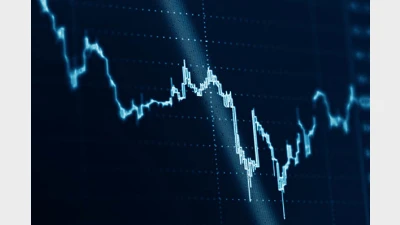Wavering risk appetite sees instos forge a ‘September smile’



Investors reversed mid-month weakness in risk-taking following a series of supportive policy announcements in September.
The latest State Street Risk Appetite Index for September has ticked up to 0.27, up from 0.09 in July, as institutional investors globally moved back into risk assets.
State Street described the recent movement as a “September smile”, pointing to a strong start to the month for risk-taking, followed by a more defensive mid-month, and then a sharp recovery in sentiment towards the end.
This, the firm said, is coincident to a series of supportive policy announcements from the Federal Reserve and the Chinese authorities.
“Like August before it, September ended with investors moving back into risk assets,” said Dwyfor Evans, APAC head of macro strategy at State Street Global Markets.
“This combination of intra-month caution and sporadic buoyancy resulted in only modest adjustments in asset class exposure.”
Namely, allocations to bonds rose marginally, while stock allocations were unchanged on the month despite a pick-in equity allocations towards the end of September.
On the other side of the coin, investors continued their exit from cash, with holdings falling to their lowest level since the beginning of August.
“The most notable trend towards the end of the month is a shift from cash and into equities, ostensibly as lower interest rates and policy stimulus moderate recession risks,” Evans said.
However, Evans said that this positive change in investor sentiment is not without its hurdles.
“The move back into risk is not without challenges, notably the outcome of the US election and ongoing geopolitical risks, but this notion that policy easing has diminished recession risks is best highlighted by cyclical relative to defensive equity sector flows, which recovered in September to levels last seen in Q1 2023,” he said.
Expounding on this, he affirmed that the full impact of China’s extensive policy stimulus remains to be seen, but said that cross-border equity flows into Chinese stocks rose to the top quintile in the immediate aftermath of the stimulus announcement.
“Strong equity flows into Indonesia and Malaysia might reflect stronger investor sentiment towards commodity exporters. Meanwhile, expectations on further Bank of Japan rate tightening saw a sharp reversal in JPY flows with investors sitting on a top quartile overweight,” Evans said.
“This has cascaded more broadly in the region: all Asian emerging currencies bar the CNY sit on top quartile positioning levels, an indication of bullish bets on regional FX on expectations of further Fed easing and a softer USD.”
State Street’s Risk Appetite Index reading for September comes after August kicked off with the biggest spike of volatility seen all year – driven by a significant sell-off in the tech sector and the carry trade unwinding – but ultimately finishing off the month at 0.09, up from 0.0. in July.
Recommended for you
As market volatility persists, some super funds are pivoting defensively, while others are strategically positioning to capitalise on emerging opportunities.
New data has shown a progressive deterioration in risk appetite among instos even prior to Donald Trump’s latest round of tariffs.
UniSuper has reached “peak investment” in US assets and is now preparing to reassess its exposures amid ongoing sharemarket volatility.
Investors have slashed their US equity allocations to the lowest level on record, according to new data from Bank of America.












